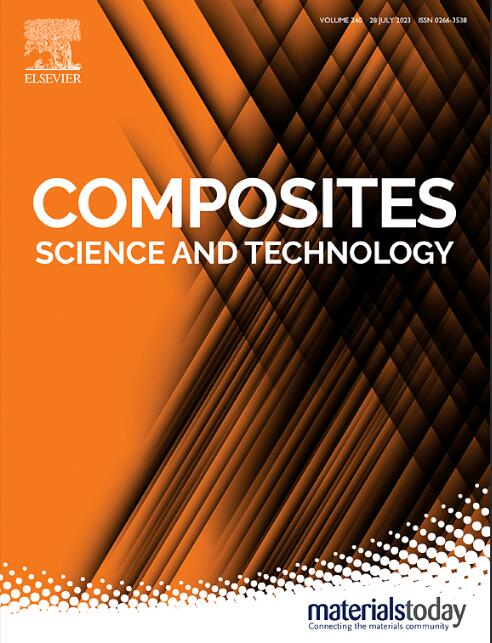采用非均匀黏聚带模型和金属层微观结构各向异性对金属纤维层合板低速冲击响应数值模型的改进
IF 8.3
1区 材料科学
Q1 MATERIALS SCIENCE, COMPOSITES
引用次数: 0
摘要
本研究通过引入非均匀内聚区模型(CZM)并考虑金属层的微观结构各向异性,加强了金属纤维层合板(FMLs)低速冲击(LVI)的数值模拟。传统的CZM实现通常假设沿纤维取向的裂纹能值是均匀的,忽略了分层扩展路径的变化和轧制金属板的各向异性。为了解决这些问题,本研究引入了各向异性CZM (ACZM)和各向异性金属层模型(AML)来提高损伤预测的保真度。通过对CARALL层压板进行LVI(常规,以及根据FML组件的非均匀微力学性能进行修改)的四种比较有限元分析(FEA)验证了所提出的方法,并将数值预测与实验落重冲击试验进行了比较。结果表明,ACZM稳定了力-时间响应并提高了分层模式的准确性,而AML提高了抗冲击性预测,尽管它略微降低了层压刚度。在保持计算效率的同时,组合ACZM-AML模型显示出最低的预测误差(近5%)。该研究证实,考虑界面变异性和金属层各向异性可以显著改善LVI模拟,为FMLs中分层的发生和扩展提供更准确的见解。本文章由计算机程序翻译,如有差异,请以英文原文为准。

Enhancement of numerical model of low-velocity impact response of fibre metal laminates by adaptation of non-homogenous cohesive zone model and microstructural anisotropy of metal layers
This study enhances the numerical modelling of low-velocity impact (LVI) in fibre metal laminates (FMLs) by incorporating a non-homogeneous cohesive zone model (CZM) and accounting for the microstructural anisotropy of metal layers. Traditional CZM implementations often assume uniform crack energy values along fibre orientation, disregarding variations in delamination propagation paths and anisotropic properties of rolled metal sheets. To address these limitations, this research introduces an anisotropic CZM (ACZM) and an anisotropic metal layer model (AML) to improve damage prediction fidelity. The proposed approach is validated through four compared finite element analyses (FEA) of CARALL laminates subjected to LVI (conventional, and modified in terms of non-homogenous micro-mechanical properties of FML components), also comparing numerical predictions with experimental drop-weight impact tests. Results demonstrate that ACZM stabilizes force-time responses and enhances the accuracy of delamination pattern, while AML improves impact resistance predictions, though it slightly reduces laminate stiffness. A combined ACZM-AML model exhibits the lowest prediction error (nearly five percent) while maintaining computational efficiency. The study confirms that accounting for interfacial variability and metal layer anisotropy significantly refines LVI simulations, providing more accurate insights into delamination initiation and propagation in FMLs.
求助全文
通过发布文献求助,成功后即可免费获取论文全文。
去求助
来源期刊

Composites Science and Technology
工程技术-材料科学:复合
CiteScore
16.20
自引率
9.90%
发文量
611
审稿时长
33 days
期刊介绍:
Composites Science and Technology publishes refereed original articles on the fundamental and applied science of engineering composites. The focus of this journal is on polymeric matrix composites with reinforcements/fillers ranging from nano- to macro-scale. CSTE encourages manuscripts reporting unique, innovative contributions to the physics, chemistry, materials science and applied mechanics aspects of advanced composites.
Besides traditional fiber reinforced composites, novel composites with significant potential for engineering applications are encouraged.
 求助内容:
求助内容: 应助结果提醒方式:
应助结果提醒方式:


